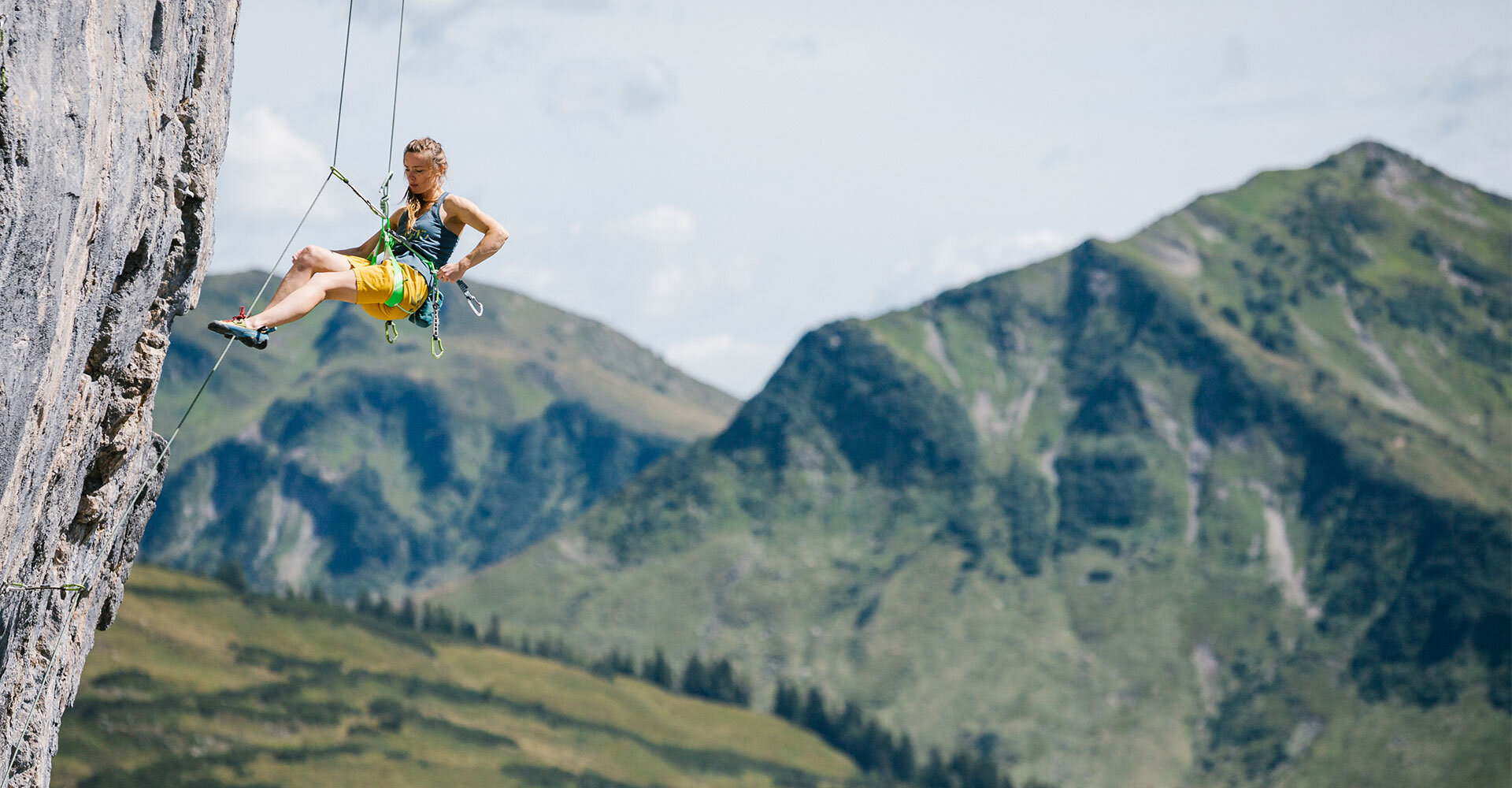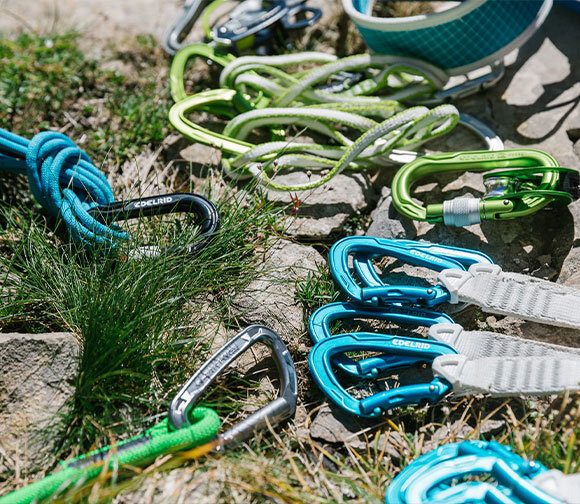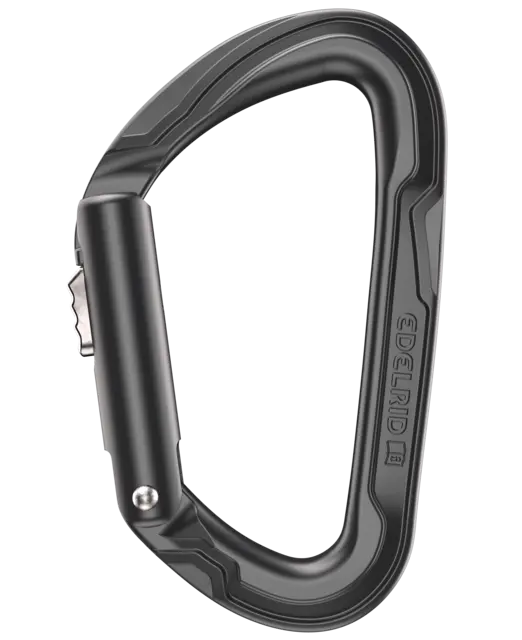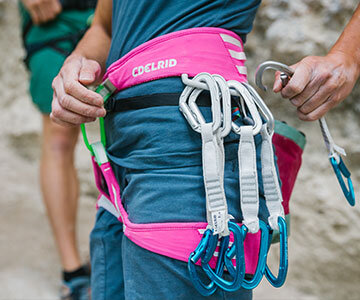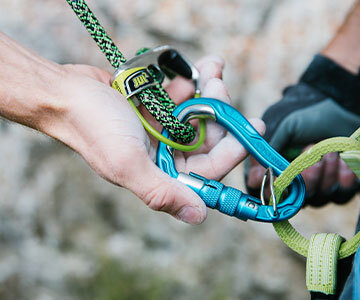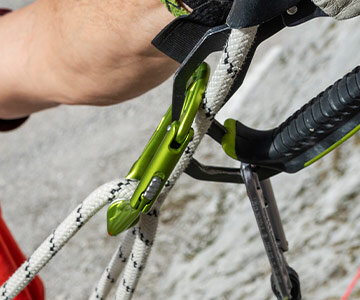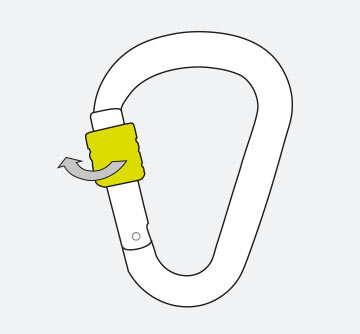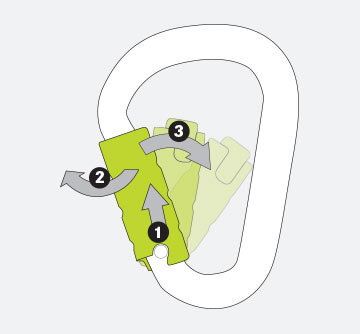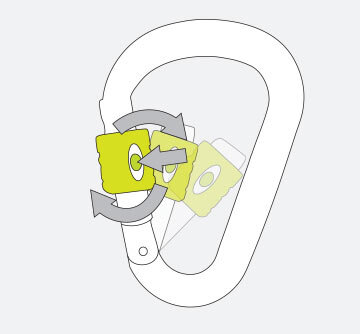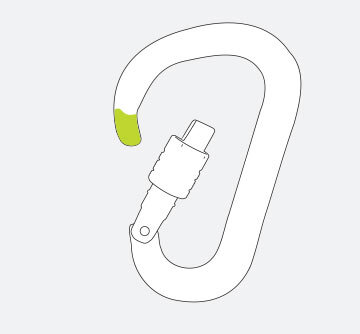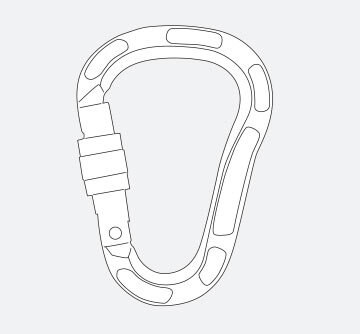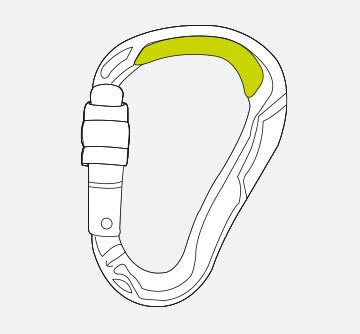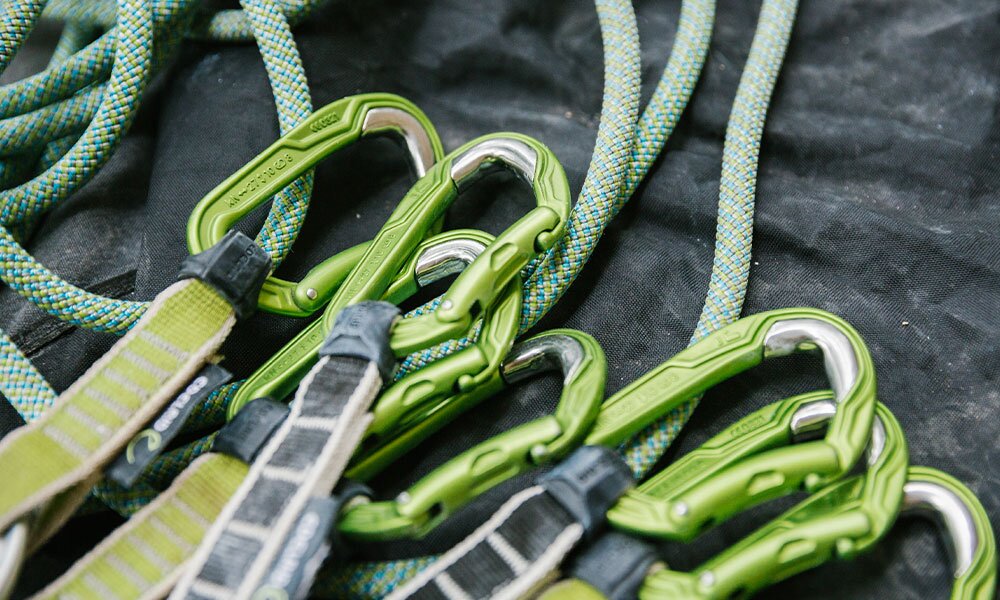Innovative, durable and lightweight masterpieces
Pear or D-shaped. Straight or bent. With or without a nose. With a wire or conventional gate. Locking or non-locking. Carabiners come in all sorts of shapes and sizes. As a key part of the safety chain, they work hard every day.
You need them to belay your partner, rappel, set up belay stations, transport gear, or attach to protection in the form of quickdraw slings. Climbing carabiners make life in the mountains or at the crag not only safe, but also easier—especially if they have good handling properties.
